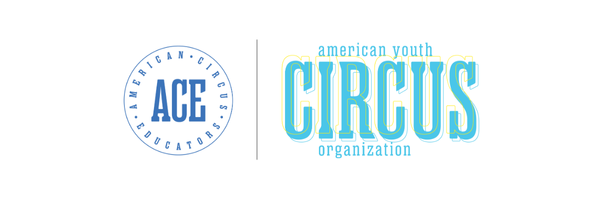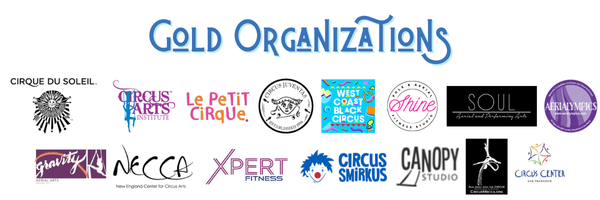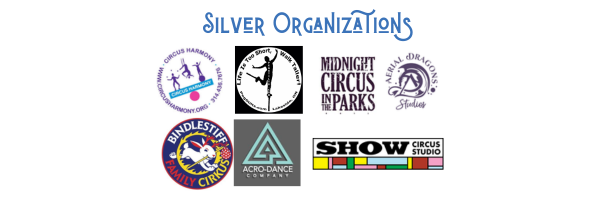I absolutely love it when I see comments like “I can’t wait to train this!” or “I can’t wait to learn from them!” on videos. This awareness of the process of training is the kind of maturity Liz and I want to promote and encourage.
My acrobatic career began five years ago when I got into AcroYoga. I have been an athlete my entire life and at the time I had been practicing a lot of yoga, so I picked up the acro side fairly quickly. Like a lot of people at the time, I learned from YouTube without a coach. There were few—if any—teachers making the rounds through the Southeast teaching workshops in those days, which bred an attitude of self-reliance among us. I would travel to workshops and learn as much as I could there, but most of my early learning was through simple trial and error.
When I met my partner Liz about 4 years ago, my skill level skyrocketed. Her background in gymnastics made a lot of new things possible for me as a base. We quickly learned that circus acrobatics would challenge us to a higher level, so we made it our goal to push ourselves as far as we could and to train with whomever would coach us. As an athlete, I wanted to become the best I could be.As a teacher, I really wanted to learn safely and correctly so that I myself would be passing down proper technique.
Toward these goals, we started traveling more. We both attended the first Acro Revolution teacher training in Harrisonburg, VA. We also trained with Niko Douwes at Pitch Catch Circus in Boulder, Colorado. Eventually we settled in California to train at the San Diego Circus Center with Jean-Luc Martin, and we also go to Montreal to train with world-renowned hand to hand coach Jerome Lebaut, among many other teachers.
Most of our teaching and training journey has been shared over social media. Instagram especially has been a fantastic tool for us as teachers. Not only has it been a platform to share ideas and get inspired, it has allowed us to build a following to fill workshops as we’ve travelled. We definitely would not have come as far as we have without social media, and it has been a blast to have friends from all over the world cheering us on and giving us ideas. However, there is one major concern I would like to address about acro on social media.
A lot of people are like me in that when they first start learning, there is not always someone to learn from, so we do our best to teach ourselves because we want to learn. When it comes to acro yoga and L-basing, it has become common to see something online, tag your partner, and comment “let’s try this!” It’s possible to get away with this attitude to a certain extent when things are low to the ground, but standing acrobatics and hand to hand skills carry much greater risk and need to be properly trained.
Many acro enthusiasts don’t have a good barometer for the skills and approaches that are appropriate for their level. Certain skills you can try casually, but other skills you have to train carefully before attempting. Some of our own skills have been in development for years, and it is only recently that we have gotten comfortable doing them without lines or spotters. I get worried when I see someone tagging a friend in a comment on our more advanced posts. The problem is that people who train acrobatics recreationally will try to bring the same playful approach they have in acro yoga to professional-level skills, and it leads to a lot of accidents. Many of these skills require a strong foundation built over time with one dedicated partner. This doesn’t mean you cannot have fun or experiment in training; it just means that every skill that is attempted has its own set of prerequisites that need to be mastered before it can be attempted safely.
Of course, this foundation is relative. It’s possible for skilled acrobats to “play” at a high level with someone they’ve just met while a beginner may struggle with basics even with their dedicated partner, so it’s impossible for a single teaching policy to apply to all combinations of partners in acro. My best advice for anyone wanting to practice acrobatics more seriously is to learn from a coach. Spend some time with someone who has been doing this for decades, not just a year or two. There is no substitute for experience to guide you so that you know the difference between a skill that is tried versus a skill that is trained. Training is something that is done over years, not just a weekend, so be patient and seek out knowledgeable people.
Liz and I have made it our goal as teachers to spread proper training techniques so that aspiring acrobats know how to train safely and effectively. We do not consider ourselves to be super-creative teachers—instead we have focused on learning good technique so that balance skills like one-arms as well as dynamic moves like cascades can be achieved safely and consistently. That kind of training isn’t always fun or glamorous, and it requires long hours with a partner and coach that don’t always make for a good Instagram story.
Matt Fields-Johnson (@theacrobear) has cultivated a following of over 26,000 Instagram followers for his acro work with his partner Elizabeth Overton (@theacrosquirrel). In addition to posting acrobatic content, they have travelled the world teaching acrobatic workshops.
Click here to see this article in its full glory in the gorgeously designed Spring 2018 Issue of ACE Digital Magazine.


